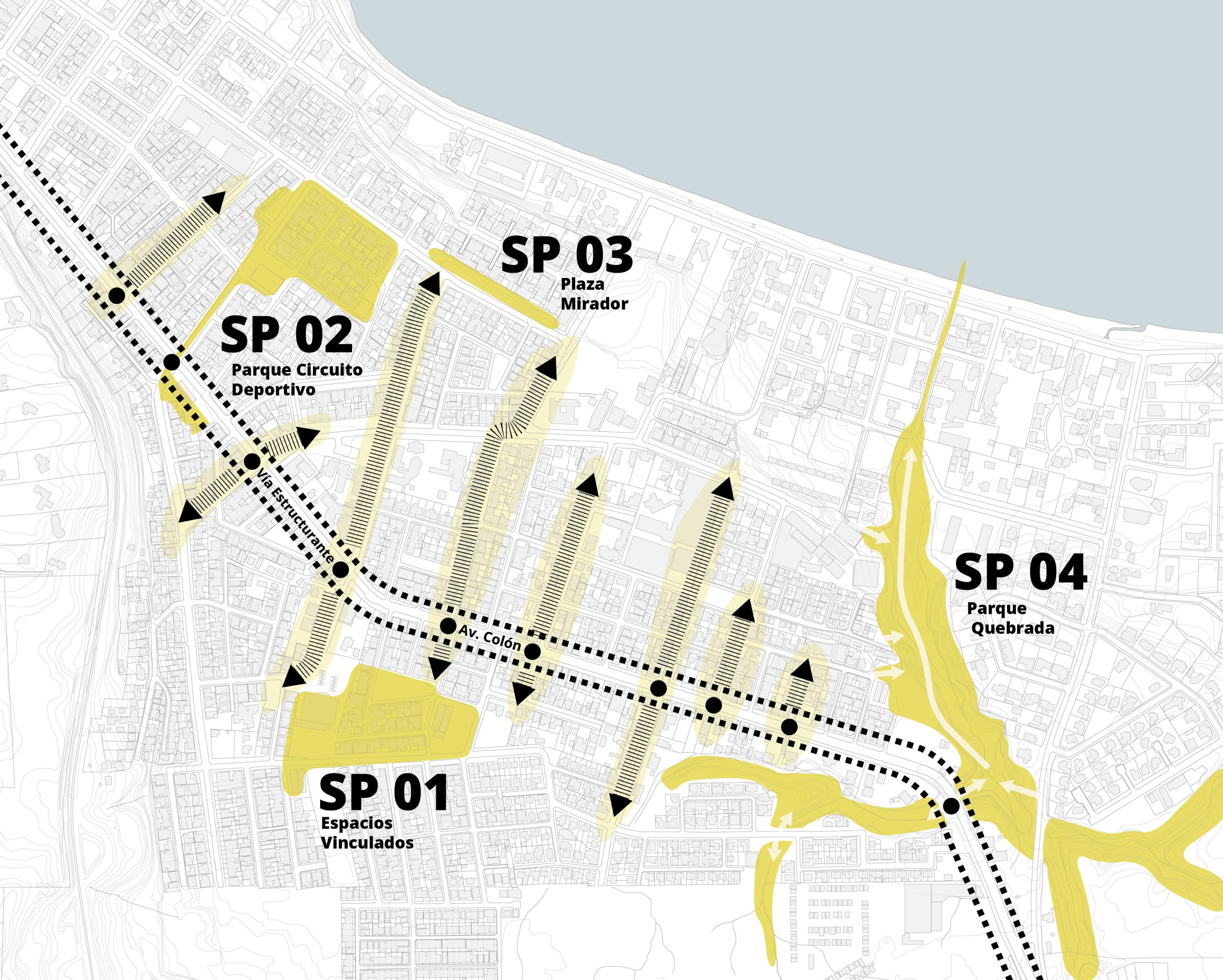Urban Design lab – Puerto Montt & Puerto Varas, Chile
Metropolitan Public Space Integration Plan: Puerto Montt & Puerto Varas, Chile
Year
2013-2018
Status
completed
Location
Puerto Montt & Puerto Varas, Chile
Collaboration
TU Wien
Authors
Sebastian Sattlegger, Lisa Mittelberger, Dominique Mashini, Guillermo Müller Videla, Andreas Hofer, Roland Krebs
Urban growth in Puerto Montt and Puerto Varas has led to low-density developments expanding over adjacent rural land, catering to high-income families and social housing projects. This has resulted in the dispersal of residential areas, segregating complexes from quality social infrastructure and public spaces. In Alerce, a satellite city of Puerto Montt, social housing construction prioritized profitability over sustainable neighborhood development. Puerto Chico in Puerto Varas faces a lack of community infrastructure, deficits in public spaces, and fragmented neighborhoods due to high-speed vehicular flow.
Emerging topics from workshops include challenges to the growth model, centralities, public spaces, and social infrastructure. Environmental sustainability is seen as an opportunity to counter negative urban development effects, focusing on green areas, landscape planning, and socio-environmental vulnerability. Concerns about long commuting times and mobility issues highlight the need for connectivity and intermodality.
Sociocultural aspects emphasize the relationship between the community and its environment, cultural and historical contexts, and road safety. Sustainable urban management involves urban planning, normative frameworks, and catalytic solutions for Alerce.
Goals include creating an urban fabric consolidating new centralities through redesigned public spaces, social infrastructure, and mixed uses. Specific objectives involve achieving an integrated public transportation system, activating the metropolitan railway, connecting corridors and parks, adapting urban streetscapes, and consolidating centralities in specific intervention areas.
The urban strategy for Alerce focuses on connecting neighborhoods with centrality, redesigning public spaces, and prioritizing pedestrians, cyclists, and public transportation. Projects include Plaza Central Llafkelen, Mercado Central Alerce extension, and Parque Reloncaví renewal.
The strategy for Puerto Chico aims to strengthen local identity, design quality public spaces, and consolidate meeting points. Projects include Espacios Vinculados, Parque Circuito Deportivo, Plaza Mirador, and Parque Quebrada as an urban park.
DE
Das städtische Wachstum in Puerto Montt und Puerto Varas hat zu einer Ausdehnung von Siedlungen mit geringer Dichte über benachbartes ländliches Land geführt, um sowohl wohlhabende Familien als auch Sozialwohnungsprojekte anzuziehen. Dies hat zur Verlagerung von Wohngebieten geführt, wodurch Wohnkomplexe von qualitativer sozialer Infrastruktur und öffentlichen Räumen getrennt wurden. In Alerce, einer Satellitenstadt von Puerto Montt, stand beim Bau von Sozialwohnungen die Rentabilität im Vordergrund, ohne ausreichend auf eine nachhaltige Entwicklung des Viertels zu achten. Puerto Chico in Puerto Varas sieht sich mit einem Mangel an Gemeinschaftsinfrastruktur, Defiziten bei öffentlichen Räumen und fragmentierten Vierteln aufgrund von schnellem Fahrzeugverkehr konfrontiert.
Aufkommende Themen aus den Workshops beinhalten Herausforderungen für das Wachstumsmodell, Zentralitäten, öffentliche Räume und soziale Infrastruktur. Umweltschutz wird als Gelegenheit betrachtet, um negative Auswirkungen der städtischen Entwicklung entgegenzuwirken, wobei der Fokus auf Grünflächen, Landschaftsplanung und sozio-ökologischer Vulnerabilität liegt. Bedenken bezüglich langer Pendelzeiten und Mobilitätsprobleme unterstreichen die Notwendigkeit von Konnektivität und Intermodalität.
Soziokulturelle Aspekte betonen die Beziehung zwischen der Gemeinschaft und ihrer Umgebung, kulturelle und historische Kontexte sowie Verkehrssicherheit. Nachhaltiges städtisches Management umfasst städtische Planung, normative Rahmenbedingungen und katalytische Lösungen für Alerce.
Ziele beinhalten die Schaffung eines städtischen Gefüges, das neue Zentralitäten durch neu gestaltete öffentliche Räume, soziale Infrastruktur und gemischte Nutzungen konsolidiert. Konkrete Ziele sind die Erreichung eines integrierten öffentlichen Verkehrssystems, die Aktivierung der Metropolitan Railway, die Verbindung von Korridoren und Parks, die Anpassung städtischer Straßenräume sowie die Konsolidierung von Zentralitäten in bestimmten Interventionsbereichen.
Die städtische Strategie für Alerce konzentriert sich darauf, Viertel mit Zentralität zu verbinden, öffentliche Räume neu zu gestalten und Fußgänger, Radfahrer und den öffentlichen Verkehr zu priorisieren. Projekte umfassen Plaza Central Llafkelen, die Erweiterung des Mercado Central Alerce und die Erneuerung des Parque Reloncaví.
Die Strategie für Puerto Chico zielt darauf ab, die lokale Identität zu stärken, qualitativ hochwertige öffentliche Räume zu gestalten und Treffpunkte zu konsolidieren. Projekte umfassen Espacios Vinculados, Parque Circuito Deportivo, Plaza Mirador und Parque Quebrada als städtischen Park.




